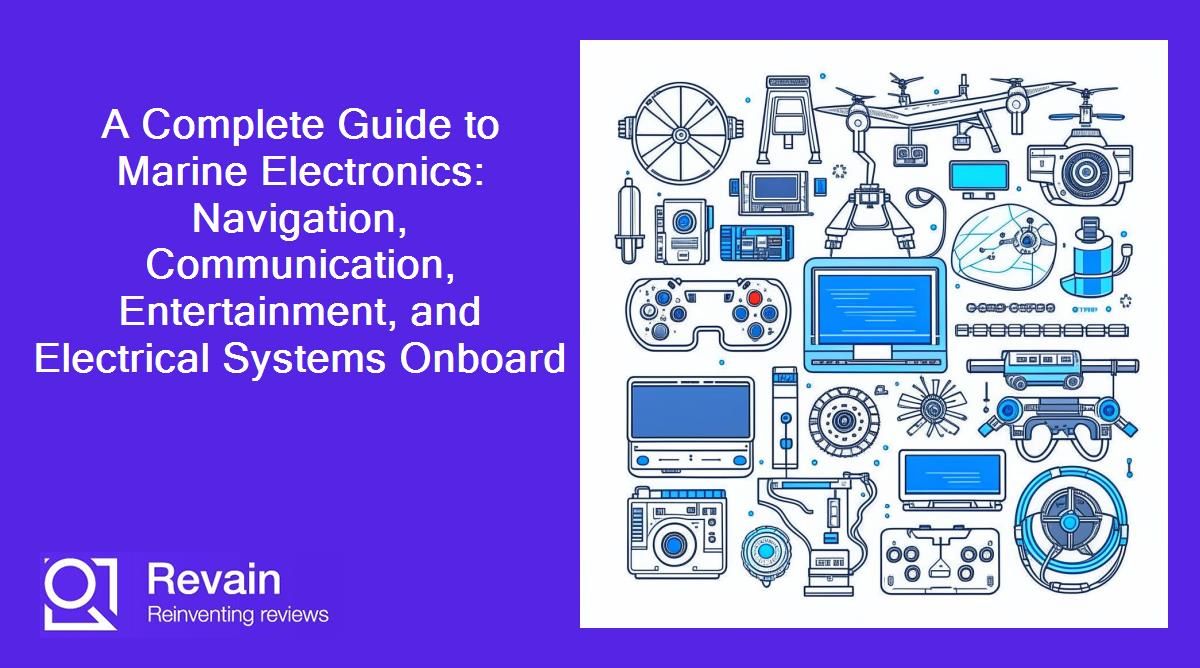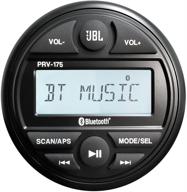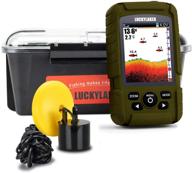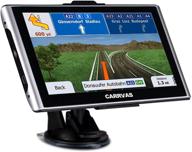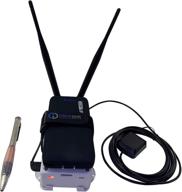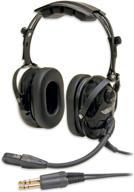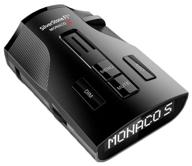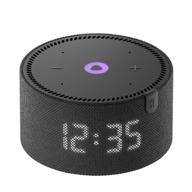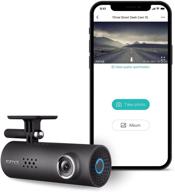Introduction to Marine Electronics
Marine electronics are electronic devices and systems designed for use aboard boats and ships. They provide navigation, communication, entertainment, and management of critical electrical systems while at sea. Some common types of marine electronics include:
Navigation Electronics
Navigation electronics enable captains and crews to determine their position while on the water. They include:
- GPS chartplotters - Combination GPS receivers and digital charts help pinpoint location and map routes.
- Radar systems - Detect obstacles and other vessels near the boat.
- Sonar - Uses sound waves to determine water depth and locate fish.
- Autopilots - Automatically maintain heading and steer the vessel.
Top products in 🌊 Marine Electronics
Communication Equipment
Communication devices allow boats to stay in contact with shore and other vessels:
- VHF radios - Transmit and receive signals locally.
- Satellite phones - Make calls from virtually anywhere offshore.
- Emergency position indicating radio beacons (EPIRB) - Broadcast distress signal if a vessel is in trouble.
- AIS transponders - Transmit boat's position to nearby vessels.
Entertainment Systems
Entertainment marine electronics provide audio, video, and computing capabilities:
- Marine stereos and speakers
- Television and satellite TV systems
- Internet and navigation apps on multi-function displays
Another interesting products
Electrical System Monitoring
Electrical system monitors help captains keep track of critical boat systems and stay apprised of any issues:
- Battery management systems - Monitor battery levels and charging.
- Inverter remote controls - Operate and monitor inverters.
- Tank level monitors - Check fuel, fresh water, wastewater, and holding tank levels.
- Automatic bilge pump switches - Trigger bilge pumps if water is detected.
Marine electronics provide boaters with navigation, communication, entertainment, and electrical system management capabilities. Choosing electronics appropriate for the type of boating and waterways, and learning to use them properly helps ensure safe, efficient, and enjoyable time on the water.
Types of Marine Electronics
Marine electronics enable safer navigation, effective communication, onboard entertainment, and electrical system monitoring while out on the water. The major categories of marine electronics include:
Navigation Electronics
Navigation electronics are vital for determining position and avoiding hazards while navigating:
- GPS chartplotters - Most boats rely on a chartplotter like the Garmin GPSMAP 8616xsv which combines GPS navigation with built-in charts and maps. They pinpoint location within a few meters and allow mapping routes and tracking movement.
- Marine radar - Radomes like the Furuno DRS4D-NXT transmit microwave pulses to detect obstacles up to 72 nautical miles away. The returns are displayed on screens, allowing captains to avoid collisions, especially at night or in poor visibility conditions.
- Sonar - Transducers such as the Raymarine Dragonfly Pro use sound waves to measure depth and bottom contour while locating fish. Side scanning sonar gives a wider undersea view off the sides of the boat.
- Autopilots - Systems such as the Simrad AP44 maintain course heading and steer the boat so the captain can focus on other duties. This reduces fatigue on long voyages.
Similar products
Communication Equipment
Reliable communication is essential for checking weather, contacting harbor authorities, and emergency situations:
- VHF radios - Fixed mount VHF radios like the Standard Horizon GX6000 allow communication with nearby boats and shore stations. Handheld models like the Icom IC-M25 are useful for communication around docks and supplemental onboard use.
- Satellite phones - Phones such as the Iridium Extreme 9575 provide global voice and SMS text communication far offshore by connecting via satellites. Plans allow pay-as-you-go use or monthly minutes.
- Emergency position indicating radio beacons (EPIRB) - EPIRBs such as the ACR ARTEX E-406 transmit emergency distress calls by satellite which alert search and rescue organizations. They are a vital piece of safety equipment.
- AIS transponders - Class B AIS transponders including the Vesper Marine XB-8000 broadcast a boat's name, position, course and speed to other nearby vessels with AIS equipment. This promotes awareness and safety.
Entertainment Systems
Onboard entertainment equipment allows enjoying music, video, internet, and computing:
- Marine stereos - Head units like the JL Audio M800/8 have built-in waterproofing and specialized features for boating. Matching marine speakers can provide high fidelity sound.
- TV and satellite systems - Marine LED TVs and satellite antenna systems offer entertainment and news. Available local channels depend on cruising location.
- Internet and apps - Internet connectivity allows accessing weather, charts, music and video streaming. Multi-function displays have built-in apps and touchscreen interfaces.
Electrical System Monitoring
Monitoring critical electrical systems prevents issues from arising or worsening unnoticed:
- Battery management systems monitor battery state of charge and health. They can selectively charge banks and disconnect loads to prevent excessive discharge.
- Inverter remote controls allow conveniently operating and monitoring inverter status from the helm, nav station or cabin.
- Tank level monitors for fuel, fresh water, grey and black water tanks indicate quantities onboard.
- High water bilge alarms detect rising water and automatically trigger pumps to avoid sinking.
Choosing marine electronics well-suited to a vessel’s systems and intended use enables safe, comfortable and fun boating adventures.
Navigation Electronics
Navigation electronics are essential equipment on any vessel to determine position and safely navigate while on the water. Key navigation electronics include:
GPS Chartplotters
GPS chartplotters combine GPS receivers with electronic navigational charts. They can pinpoint a boat's location within a few meters and plot the position on a chart. Common features include:
- Plotting courses and tracking movement
- Displaying navigation aids like buoys and lighthouses
- Creating routes and waypoints
- Showing depth contours, marina locations, and other chart details
Leading models are made by Garmin, Raymarine, and Furuno. Touchscreen operation makes route planning and system control intuitive.
Marine Radar
Marine radar uses microwave pulses to detect objects around the boat that may be difficult to see visually. This allows avoiding collisions, especially at night or in poor visibility. Radar displays include:
- Radar domes that transmit and receive signals
- Displays that plot radar returns around the ship
- Controls for gain, range, and other settings
Radar is essential for safe navigation in congested or low visibility conditions. Leading brands include Furuno, Raymarine, and Garmin.
Sonar
Sonar uses sound waves to determine water depth and bottom contour. Advanced sonars can also locate fish. Key capabilities include:
- Water depth readout
- Bottom profiling
- Fish arches and underwater images on display
Popular fish finding sonars are made by Humminbird, Raymarine, and Garmin. Sonar capability may be integrated into multi-function displays.
Marine navigation electronics provide situational awareness on the water and enable getting safely from point to point. They are invaluable tools for any mariner.
Communication Electronics
Reliable communication systems are essential equipment on any vessel. They allow contacting other boats, shore stations, and emergency services when offshore. Key marine communication electronics include:
VHF Radios
VHF radios transmit and receive line-of-sight radio signals from nearby vessels and coast stations. Common types include:
- Fixed mount - Installed at helm station and wired into antenna. Provide primary onboard communication.
- Handheld - Portable units for supplemental use. Useful when leaving the boat.
VHF frequencies are between 156-162 MHz. Channel 16 is the international distress and calling frequency. Typical range is up to 25 nautical miles.
Satellite Phones
Satellite phones connect to orbiting satellites to provide global voice and text communication offshore. Key features:
- Make and receive calls from virtually any ocean location
- Text messaging capability
- Purchase voice minutes or monthly plans
Popular brands include Iridium, Inmarsat, and Globalstar. Satellite phones are more expensive than cell phones but provide connectivity far offshore.
EPIRBs
Emergency position indicating radio beacons (EPIRBs) are vital safety devices. They:
- Transmit emergency distress signals by satellite
- Alert search and rescue organizations of boats in need of help
- Operate automatically when submerged or manually activated
EPIRBs should be registered to appropriate authorities. Leading models include ACR, Ocean Signal, and McMurdo.
Marine communication systems provide connectivity with shore and improve safety in remote areas. They are an essential component of electronics systems.
Entertainment Systems
Entertainment electronics allow enjoying music, video, internet access, and computing capabilities while out on the water. Key systems include:
Marine Stereos
Marine stereos provide high quality audio onboard. Features include:
- Waterproof faceplates resist spray and moisture
- Built-in Bluetooth for wireless music playback
- Weatherband radio tuner for weather updates
- Auxiliary inputs for connecting smartphones and MP3 players
Matching marine speakers are optimized for open-air use and feature UV and water resistance. Popular brands are Fusion, JL Audio, Kenwood, and Clarion.
Television Systems
Onboard televisions offer news and entertainment while cruising. Options include:
- LED flat screen TVs resistant to vibration and dampness
- Satellite antenna systems to access HD channels
- TV antennas for picking up over-the-air signals when near shore
Use depends on location - satellite TV works worldwide, antennas only near land. Leading providers include KVH, Intellian, and DirectTV.
Internet and Apps
Internet connectivity allows accessing weather, charts, music, video and more offshore. Methods include:
- Cellular data through onboard WiFi hotspots
- Satellite internet through domes or subscription services
- Apps on multi-function displays and chartplotters
Use depends on proximity to cell towers or satellite coverage. Connectivity provides access to useful services offshore.
Entertainment systems make time on the water more comfortable and enjoyable for passengers.
Electrical Systems
Modern boats rely on electrical systems for navigation, lighting, pumps, appliances, and comfort. Monitoring these systems is essential for reliability and safety. Key components include:
Battery Management Systems
Battery management systems (BMS) monitor battery health and usage. For example, the Victron BMV-712 can:
- Measure voltage, current, and temperature of battery banks
- Estimate state of charge and time remaining
- Detect issues like low voltage or overheating
Advanced BMS can selectively charge banks, disconnect loads, and integrate with other systems. This extends battery life and ensures power when needed.
Inverter Controls
Inverters convert DC to AC power for operating AC appliances when away from shore power. Remote controls like the Victron GX Touch 50 allow:
- Checking inverter status and operating mode
- Turning inverter on/off from any location
- Monitoring battery state of charge
Mounting displays/controls locally or remotely improves usability and system monitoring.
Tank Level Monitors
Measuring tank levels is important for planning and conservation. Systems like the Maretron TLA100 provide ultasonic monitoring of:
- Fuel level for range/refueling planning
- Fresh water for showering and cleaning
- Gray and black water to optimize pumpouts
Direct tank readings improve on sight gauges which can be inaccurate.
Automatic Bilge Pumps
High water bilge pump switches trigger pumps when water is detected, before sinking occurs. For example, the Rule Mate model:
- Float switch activates pump at high water level
- Automatically pumps out bilge
- Prevents boat from filling with water when unattended
Monitoring critical electrical and plumbing systems prevents problems and enhances safety.
What Are The Most Popular Marine Electronics Products?
Based on the search results, here are some of the most popular marine electronics products:
Some of the top brands for marine electronics include Garmin, Raymarine, Furuno, Simrad, KVH TracNet, Lowrance, and Furuno TZtouch3. The Best Marine Electronics and Technology Awards 2023 recognized several products, including the Simrad Halo 2000/3000 for Leading Edge Technology, Garmin Navionics+ for Best in Navigation, and Furuno TZtouch3 with CHIRP Side-Scan Technology for Most Innovative for Fishing.
In terms of new and innovative products, the Best New Electronics of 2023 article from BoatUS highlighted the Blind Spot Eliminator as a significant development in the world of marine electronics. Additionally, the article noted that marine electronics production has been slow in recent years, but there has been a flood of innovation in the industry recently.
What Are The Differences Between Chartplotters And Fishfinders?
Here are the differences between chartplotters and fishfinders:
Chartplotters:
Fishfinders:
In summary, chartplotters are primarily used for navigation, while fishfinders are used for locating fish and other underwater structures. Chartplotters use GPS to show your location on a map, while fish






